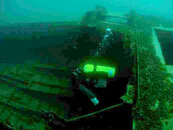Charlie99
Contributor
- Messages
- 7,966
- Reaction score
- 166
- # of dives
- 500 - 999
I'm pretty sure that BenWilson's point is that you cannot change, after the fact, the amount of light that reaches the sensor. You have the digitized data from the sensors. If the EV setting when taking the photo was too high and you have blown out highlights, no amount of exposure adjustment of the digital data will correct that.I think there are lots of things you can change that aren't exposure. If you think about what a sensor array sees (as opposed to a single photosite) you can change the intensity and the color profile of the array as well as make a whole bunch of local adjustments, same as in the old darkroom. Exposure, color temperature, white balance, local saturation are all changeable. Now we do it in the computer but it was done for years in the color darkroom.
Bill
If you are underexposed, while increasing the "exposure" setting in the raw processing software will increase the apparent brightness of the shadow areas, it will also increase the noise. A true change in exposure, done at the time of the photo would increase the amount of light seen by the sensor, which increases the signal to noise ratio.
Using the analogy of films and darkrooms, the manipulations of the RAW file are like making custom adjustments to your prints. But what isn't there in the negative can't be recovered. Hence the name Digital Negative (DNG).







